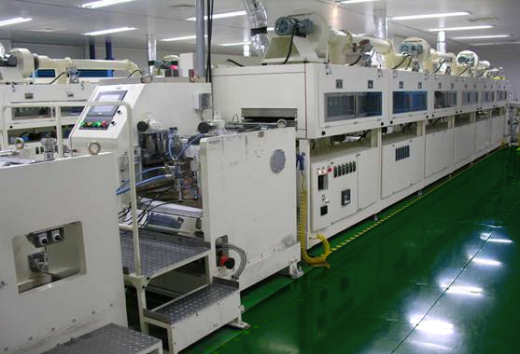Lithium Batteries in Series: Understanding the Pros and Cons of Connecting Them
Lithium batteries have become increasingly popular over the years due to their high energy density and long cycle life. They are now commonly used in various applications such as electric vehicles, portable electronics, and renewable energy systems. In some cases, it may be necessary to connect multiple lithium batteries in series to achieve the desired voltage level. However, there are certain pros and cons to consider when doing so. In this article, we will explore these aspects in detail.
Pros of Connecting Lithium Batteries in Series
1. Increased Voltage: One of the primary advantages of connecting lithium batteries in series is that it allows you to increase the voltage of the battery bank. The voltage of each individual battery is added together, resulting in a higher overall voltage. This can be particularly useful in applications that require a high voltage, such as electric vehicles or solar energy systems.
2. More Efficient Charging: When lithium batteries are connected in series, they can be charged more efficiently. This is because the charger can apply a higher voltage, which allows the batteries to charge faster. Additionally, when the batteries are fully charged, the charger can shut off automatically, preventing overcharging.
3. Reduced Wire Resistance: Another benefit of connecting lithium batteries in series is that it can reduce the wire resistance in the system. This is because the current is spread across multiple batteries, reducing the load on each individual battery. As a result, the voltage drop across the wires is minimized, improving the overall efficiency of the system.
Cons of Connecting Lithium Batteries in Series
1. Increased Risk of Overheating: One of the main drawbacks of connecting lithium batteries in series is that it can increase the risk of overheating. This is because each battery has its own charging and discharging characteristics, and if one battery is overcharged or over-discharged, it can cause thermal runaway in the entire system. This can lead to cell damage, fire, or even explosion.

2. Reduced Cycle Life: Another disadvantage of connecting lithium batteries in series is that it can reduce the cycle life of the batteries. This is because each battery will be subjected to a higher voltage, which can cause more stress and wear on the cells. Over time, this can lead to a reduced capacity and a shorter lifespan for the battery bank.
3. Limited Flexibility: When lithium batteries are connected in series, they must be of the same capacity and voltage rating. This can limit the flexibility of the system, as you cannot mix and match different types of batteries. Additionally, if one battery in the series fails, it can affect the entire system and require replacement of all the batteries.
Conclusion
In conclusion, connecting lithium batteries in series can offer several benefits, such as increasing the voltage and improving charging efficiency. However, it is important to also consider the drawbacks, including the increased risk of overheating, reduced cycle life, and limited flexibility. To ensure the safety and longevity of the battery bank, it is essential to carefully choose the batteries, monitor the charging and discharging process, and implement adequate safety measures.
-
 Introduction: Medical equipment plays a crucial role in healthcare settings, helping healthcare professionals provide accurate diagnoses, perform life-saving procedures, and monitor patient conditions. To ensure the seamless functioning of these devices, reliable and long-lasting power sources are essential. Lithium batteries have emerged as a game-changer in the medical industry, offering significant advancements in technology that enhance both performance and safety....Citeşte mai mult
Introduction: Medical equipment plays a crucial role in healthcare settings, helping healthcare professionals provide accurate diagnoses, perform life-saving procedures, and monitor patient conditions. To ensure the seamless functioning of these devices, reliable and long-lasting power sources are essential. Lithium batteries have emerged as a game-changer in the medical industry, offering significant advancements in technology that enhance both performance and safety....Citeşte mai mult -
 Introduction In today's fast-paced world, where technology plays a vital role in our daily lives, the demand for efficient and reliable power solutions is increasing. One such solution that has gained significant popularity is the High-Efficiency 48V LiFePO4 Battery Charger. This innovative charger offers an optimal power solution for a wide range of energy needs. In this article, we...Citeşte mai mult
Introduction In today's fast-paced world, where technology plays a vital role in our daily lives, the demand for efficient and reliable power solutions is increasing. One such solution that has gained significant popularity is the High-Efficiency 48V LiFePO4 Battery Charger. This innovative charger offers an optimal power solution for a wide range of energy needs. In this article, we...Citeşte mai mult -
 With the increasing demand for reliable and efficient power solutions, the 3.2V LiFePO4 battery has emerged as a popular choice for various applications. This type of battery provides exceptional performance, long cycle life, and enhanced safety features, making it an ideal choice for use in a wide range of devices and systems. The 3.2V LiFePO4 battery, also known as...Citeşte mai mult
With the increasing demand for reliable and efficient power solutions, the 3.2V LiFePO4 battery has emerged as a popular choice for various applications. This type of battery provides exceptional performance, long cycle life, and enhanced safety features, making it an ideal choice for use in a wide range of devices and systems. The 3.2V LiFePO4 battery, also known as...Citeşte mai mult -
 As the world moves towards more sustainable energy solutions, lithium iron phosphate (LiFePO4) batteries have emerged as a popular choice for renewable energy storage. These batteries are known for their high energy density, long cycle life, and stable performance. If you own a 48V LiFePO4 battery, it is essential to choose the right charger to maintain its lifespan and performance....Citeşte mai mult
As the world moves towards more sustainable energy solutions, lithium iron phosphate (LiFePO4) batteries have emerged as a popular choice for renewable energy storage. These batteries are known for their high energy density, long cycle life, and stable performance. If you own a 48V LiFePO4 battery, it is essential to choose the right charger to maintain its lifespan and performance....Citeşte mai mult -
 The development of high-capacity batteries has revolutionized various industries, including automotive, renewable energy, and consumer electronics. One such incredible innovation is the high-capacity 12V 100Ah LiFePO4 (Lithium Iron Phosphate) battery, which offers enhanced performance compared to traditional lead-acid batteries. LiFePO4 batteries are a type of lithium-ion battery that provides numerous advantages over other types. They are known for their...Citeşte mai mult
The development of high-capacity batteries has revolutionized various industries, including automotive, renewable energy, and consumer electronics. One such incredible innovation is the high-capacity 12V 100Ah LiFePO4 (Lithium Iron Phosphate) battery, which offers enhanced performance compared to traditional lead-acid batteries. LiFePO4 batteries are a type of lithium-ion battery that provides numerous advantages over other types. They are known for their...Citeşte mai mult -
 There has been a significant increase in the demand for portable electronic products such as smartphones, tablets, laptops, and wearable devices. These devices have become an integral part of our daily lives, providing us with convenience and connectivity on the go. One of the key components that enable these devices to function seamlessly is the lithium battery technology. Lithium...Citeşte mai mult
There has been a significant increase in the demand for portable electronic products such as smartphones, tablets, laptops, and wearable devices. These devices have become an integral part of our daily lives, providing us with convenience and connectivity on the go. One of the key components that enable these devices to function seamlessly is the lithium battery technology. Lithium...Citeşte mai mult -
 Are you tired of dealing with weak and unreliable starter batteries in your vehicle? Look no further than a lithium starter battery to provide the power and reliability you need to get your engine revving. Lithium starter batteries are a popular choice for many vehicle enthusiasts due to their lightweight and compact design, as well as their ability to...Citeşte mai mult
Are you tired of dealing with weak and unreliable starter batteries in your vehicle? Look no further than a lithium starter battery to provide the power and reliability you need to get your engine revving. Lithium starter batteries are a popular choice for many vehicle enthusiasts due to their lightweight and compact design, as well as their ability to...Citeşte mai mult

